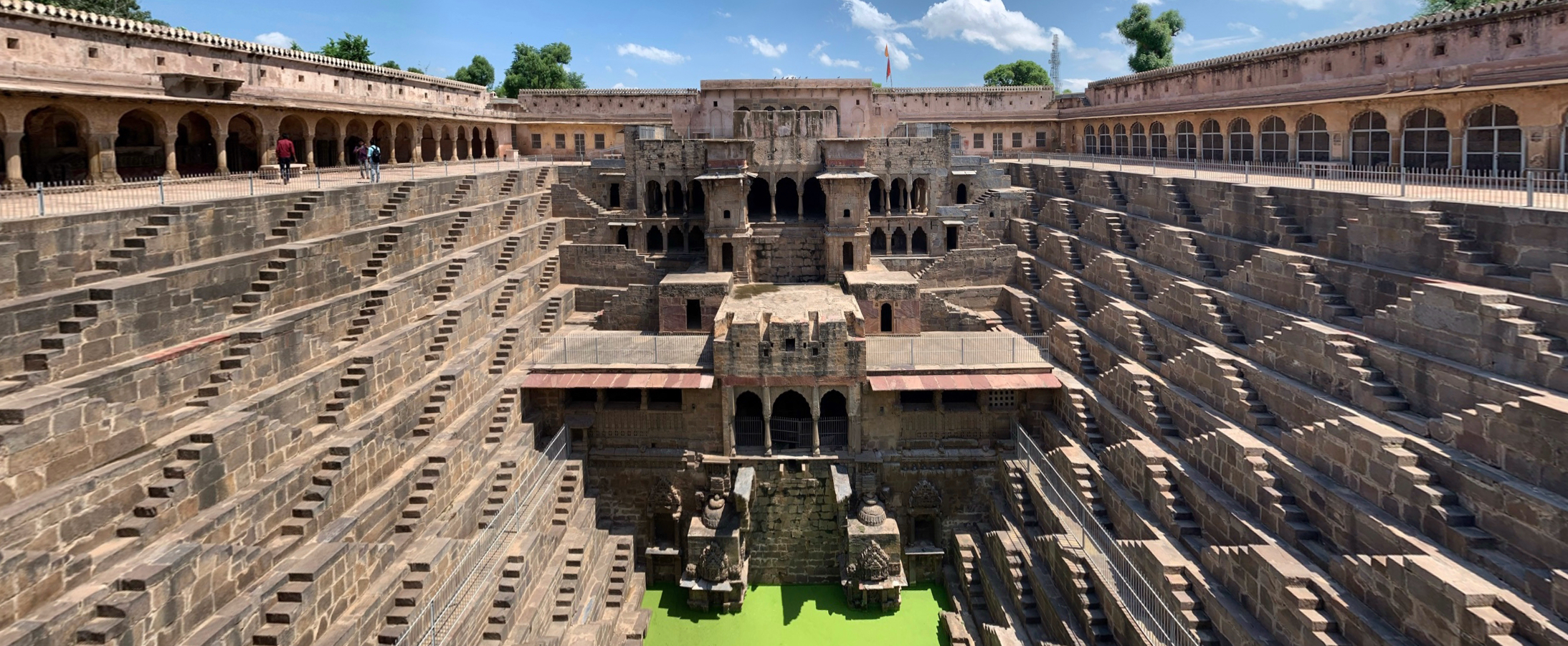Chand Baori, an architectural marvel nestled in the village of Abhaneri, Rajasthan, stands as one of India's most remarkable stepwells. Constructed in the 9th century during the reign of King Chanda of the Nikumbha Dynasty, this extraordinary structure represents the pinnacle of ancient engineering and architectural innovation. The stepwell's name itself carries historical significance, combining the king's name with "baori," the local term for stepwell, reflecting its royal heritage and cultural importance in the region.
The creation of this magnificent stepwell was driven by the practical necessities of life in Rajasthan's arid climate. The region's extreme weather conditions, characterized by intense heat and scarce rainfall, demanded innovative solutions for water conservation and accessibility. King Chanda's vision extended beyond mere utility, culminating in a structure that masterfully balanced functional requirements with aesthetic excellence. The construction process showcased the remarkable expertise of local craftsmen and architects who utilized grey sandstone from the nearby Alwar district to create this enduring masterpiece.
The most striking aspect of Chand Baori is its extraordinary geometric design. Descending 13 stories into the earth to a depth of approximately 30 meters, the stepwell features an intricate arrangement of 3,500 narrow steps configured in a perfect inverted pyramid pattern. This precise geometric configuration serves multiple purposes: it provides easy access to water at varying levels while creating a natural cooling system within the structure. The temperature at the lower levels remains several degrees cooler than the surface, making it a natural refuge from the desert heat and a popular gathering spot for the local community.
The architectural brilliance of Chand Baori extends beyond its functional elements to include elaborate artistic details that offer insights into medieval Indian culture. The walls feature intricate carvings depicting Hindu deities, mythological narratives, and complex geometric patterns, creating a visual encyclopedia of religious and artistic traditions. A particularly notable feature is the multi-storied pavilion adorned with detailed pillars and jharokhas, which showcases the evolution of architectural styles through different historical periods. These elements combine to create a structure that serves as both a practical facility and a testament to artistic achievement.
Throughout its history, Chand Baori has played a central role in community life, serving as more than just a water source. The stepwell became a vital center for social gatherings, religious ceremonies, and community celebrations, particularly during the intense summer months when its cooling properties provided welcome relief. Local folklore has woven fascinating tales around the stepwell, including the popular legend that it was constructed overnight by supernatural beings. These stories reflect the deep impression the structure has made on the collective imagination of the region and add to its cultural significance.
The stepwell has undergone various modifications over the centuries while maintaining its core architectural integrity. Significant additions during the 18th century under Mughal influence introduced new elements to the structure, including enhanced pavilions and decorative features that blend Hindu and Islamic architectural styles. These modifications reflect the dynamic cultural exchanges that characterized Indian history and have contributed to the unique architectural fusion visible today. Despite these changes, the original ingenious design principles remain intact, continuing to impress visitors with their mathematical precision and aesthetic harmony.
In contemporary times, Chand Baori has gained recognition as a significant historical monument and tourist destination. While it no longer serves its original purpose as a water source, the stepwell has been preserved as a cultural heritage site, attracting visitors and researchers from across the globe. Conservation efforts have been implemented to protect and maintain this ancient structure, ensuring its preservation for future generations. The stepwell has also captured the imagination of the creative community, featuring in various international films and documentaries, which has helped bring its architectural splendor to a global audience.
The site today offers visitors a remarkable glimpse into India's architectural and cultural heritage. While access to the lower levels is restricted for safety reasons, the view from above provides an impressive perspective of this architectural achievement. The adjacent Harshat Mata Temple, dedicated to the goddess of joy and happiness, complements the stepwell and creates a comprehensive historical complex. Together, these structures offer valuable insights into the religious and architectural traditions of ancient Rajasthan, making Chand Baori not just a monument to human ingenuity but a living testament to India's rich cultural legacy.





